-
 Bitcoin
Bitcoin $95,066.4944
1.72% -
 Ethereum
Ethereum $1,802.7434
2.06% -
 Tether USDt
Tether USDt $1.0005
0.03% -
 XRP
XRP $2.1930
-0.47% -
 BNB
BNB $603.6022
0.74% -
 Solana
Solana $151.1178
-0.40% -
 USDC
USDC $1.0000
0.00% -
 Dogecoin
Dogecoin $0.1813
0.20% -
 Cardano
Cardano $0.7166
-1.31% -
 TRON
TRON $0.2433
-1.28% -
 Sui
Sui $3.5689
9.35% -
 Chainlink
Chainlink $15.0371
0.40% -
 Avalanche
Avalanche $22.3329
0.24% -
 Stellar
Stellar $0.2846
1.83% -
 Hedera
Hedera $0.1948
3.57% -
 Shiba Inu
Shiba Inu $0.0...01388
2.30% -
 UNUS SED LEO
UNUS SED LEO $8.8405
-4.47% -
 Toncoin
Toncoin $3.2316
1.82% -
 Bitcoin Cash
Bitcoin Cash $376.7291
7.38% -
 Polkadot
Polkadot $4.2663
1.01% -
 Litecoin
Litecoin $86.4723
3.48% -
 Hyperliquid
Hyperliquid $18.2396
-3.02% -
 Dai
Dai $1.0001
0.01% -
 Bitget Token
Bitget Token $4.4431
0.26% -
 Ethena USDe
Ethena USDe $0.9998
0.03% -
 Pi
Pi $0.6467
-0.75% -
 Monero
Monero $230.0592
1.28% -
 Pepe
Pepe $0.0...08863
2.73% -
 Uniswap
Uniswap $5.8770
1.31% -
 Aptos
Aptos $5.5235
0.75%
Why can’t NFTs be spent like money?
NFTs can't be spent like money due to their non-fungible nature, high transaction fees, and the complexity of smart contract transfers, making them unsuitable for everyday purchases.
Apr 06, 2025 at 07:21 am
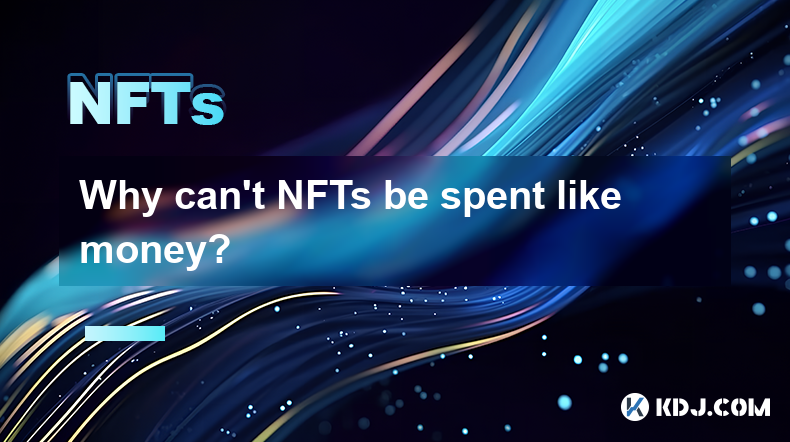
Non-fungible tokens (NFTs) have become a popular topic in the cryptocurrency world, but many people are still confused about their nature and functionality. One common question is why NFTs can't be spent like money. To understand this, we need to delve into the fundamental characteristics of NFTs and how they differ from traditional cryptocurrencies like Bitcoin or Ethereum.
NFTs are unique digital assets that represent ownership of a specific item or piece of content. Unlike cryptocurrencies, which are fungible and can be exchanged on a one-to-one basis, NFTs are non-fungible. This means that each NFT is distinct and cannot be directly exchanged for another NFT. This uniqueness is what gives NFTs their value and makes them suitable for representing digital art, collectibles, and other unique items.
The primary reason NFTs can't be spent like money is their non-fungible nature. When you spend money, you exchange it for goods or services at a set value. With NFTs, their value is subjective and tied to the uniqueness of the asset they represent. If you were to "spend" an NFT, you would be transferring ownership of a specific item, not using it as a medium of exchange in the same way money is used.
Another aspect to consider is the infrastructure supporting NFTs. Most NFTs are built on blockchain platforms like Ethereum, which use smart contracts to manage ownership and transfers. These smart contracts are designed to handle the unique nature of NFTs, not to facilitate transactions in the same way traditional financial systems do. While you can sell an NFT on a marketplace, the process is more akin to selling a collectible than spending money.
The Role of NFTs in the Crypto Ecosystem
NFTs play a unique role in the cryptocurrency ecosystem, distinct from traditional cryptocurrencies. They enable the tokenization of digital assets, allowing creators to monetize their work in new ways. For example, artists can sell digital art as NFTs, retaining ownership and receiving royalties on future sales. This has led to a boom in the digital art market, with some NFTs selling for millions of dollars.
However, this role as a tokenized asset rather than a currency is why NFTs can't be spent like money. They are not designed to be a medium of exchange but rather a way to represent and transfer ownership of unique digital items. This distinction is crucial for understanding their value and use cases within the crypto space.
Technical Limitations of NFTs
From a technical standpoint, there are several reasons why NFTs can't be used as money. First, the blockchain networks that host NFTs, such as Ethereum, have transaction fees (known as gas fees) that can be prohibitively expensive for small transactions. If you were to try to use an NFT for everyday purchases, the cost of the transaction could outweigh the value of the NFT itself.
Second, the process of transferring NFTs is more complex than sending money. Each NFT transfer requires the execution of a smart contract, which involves additional steps and potential delays. This makes NFTs unsuitable for quick, everyday transactions where speed and simplicity are essential.
Finally, the lack of standardization in NFT formats and metadata can lead to issues with interoperability. While some NFTs can be traded on multiple platforms, others are tied to specific marketplaces or protocols. This fragmentation makes it difficult to use NFTs as a universal form of payment.
The Psychological Aspect of NFTs
The psychological aspect of NFTs also plays a role in why they can't be spent like money. People perceive NFTs differently than they do money. Money is seen as a tool for exchange, while NFTs are often viewed as collectibles or investments. This perception affects how people use and value NFTs.
For instance, someone might be willing to spend money on a piece of digital art because they see it as an investment or a way to support an artist. However, they would not use that same piece of art to buy groceries or pay for a service. This mindset reinforces the idea that NFTs are not suitable for everyday spending.
Legal and Regulatory Considerations
Legal and regulatory considerations also impact the use of NFTs as money. In many jurisdictions, NFTs are treated differently than traditional cryptocurrencies. While cryptocurrencies are often subject to financial regulations, NFTs are seen more as digital assets or collectibles. This distinction affects how they can be used and transferred.
For example, some countries have strict regulations on the use of cryptocurrencies as a form of payment. These regulations do not necessarily apply to NFTs, but they do create a legal environment that discourages the use of any digital asset as money. Additionally, the lack of clear legal frameworks for NFTs can make it risky to use them in financial transactions.
The Future of NFTs and Money
While NFTs currently can't be spent like money, the future of the technology is still evolving. Some projects are exploring ways to make NFTs more fungible or to create hybrid tokens that combine the benefits of NFTs and traditional cryptocurrencies. For example, some platforms are developing fractional NFTs, which allow multiple people to own a piece of a single NFT, making it more liquid and easier to trade.
However, even with these innovations, the fundamental nature of NFTs as unique digital assets is unlikely to change. They will continue to be used primarily for representing ownership and value in the digital world, rather than as a medium of exchange.
Comparing NFTs to Other Digital Assets
To further understand why NFTs can't be spent like money, it's helpful to compare them to other digital assets. For instance, cryptocurrencies like Bitcoin and Ethereum are designed to be fungible and serve as a medium of exchange. They can be split into smaller units and used for transactions of any size.
In contrast, NFTs are indivisible and represent a specific asset. While you can sell an NFT, you can't break it down into smaller parts to use for different purchases. This fundamental difference makes NFTs more akin to traditional collectibles or art pieces than to money.
The Role of Marketplaces in NFT Transactions
NFT marketplaces play a crucial role in the ecosystem, but they are not designed to facilitate spending NFTs like money. These platforms are built for buying, selling, and trading NFTs, often with a focus on specific types of assets like art, music, or virtual real estate.
When you list an NFT for sale on a marketplace, you set a price and wait for a buyer. This process is more similar to selling a physical item than spending money. The buyer purchases the NFT using cryptocurrency, and the ownership is transferred via a smart contract. This transaction model is not conducive to using NFTs for everyday purchases or as a form of payment.
The Impact of Scarcity on NFT Value
Scarcity is a key factor in the value of NFTs, and it's another reason why they can't be spent like money. Many NFTs are created with limited editions or unique attributes, which drives up their value due to rarity. This scarcity makes them more suitable for collecting and investing than for spending.
If NFTs were used as money, their value would need to be stable and predictable, which is not the case with most NFTs. The value of an NFT can fluctuate widely based on demand, trends, and the perceived value of the underlying asset. This volatility makes them unsuitable for use as a currency.
The Role of Smart Contracts in NFT Transactions
Smart contracts are essential for the functioning of NFTs, but they also limit their use as money. These contracts automate the transfer of ownership and can include additional rules, such as royalties for creators. However, they are not designed to handle the complexities of everyday financial transactions.
For example, a smart contract for an NFT might include conditions for resale or usage rights, which are not relevant when spending money. The focus on ownership and rights rather than on facilitating transactions makes smart contracts more suited to the unique nature of NFTs than to the fungible nature of money.
The Social and Cultural Value of NFTs
NFTs often carry significant social and cultural value, which adds another layer to why they can't be spent like money. Many NFTs represent more than just digital assets; they are part of a community or a movement. For example, some NFTs are tied to exclusive events or memberships, which adds to their value beyond their monetary worth.
This social and cultural aspect means that people are often more interested in holding onto NFTs as symbols of status or belonging rather than using them as a form of payment. The emotional and cultural value of NFTs makes them more akin to art or collectibles than to money.
The Role of Blockchain Technology
Blockchain technology is the backbone of NFTs, but it also contributes to their limitations as a form of money. While blockchains like Ethereum enable the creation and transfer of NFTs, they are not optimized for the high volume and speed required for everyday financial transactions.
The decentralized nature of blockchains can lead to slower transaction times and higher fees, which are not conducive to using NFTs as money. Additionally, the immutability of blockchain records, while beneficial for proving ownership, can make it difficult to reverse or modify transactions, which is often necessary in traditional financial systems.
The Perception of Value in NFTs
The perception of value in NFTs is another factor that affects their use as money. Unlike traditional money, which has a standardized value, the value of an NFT is highly subjective. It depends on factors like the reputation of the creator, the rarity of the asset, and current market trends.
This subjective value makes it challenging to use NFTs as a reliable form of payment. If the value of an NFT can change dramatically based on external factors, it becomes difficult to use it for transactions where a stable value is required. This volatility and subjectivity in value are key reasons why NFTs can't be spent like money.
The Role of Fractional NFTs
Fractional NFTs are an emerging concept that aims to make NFTs more accessible and potentially more usable as a form of payment. By allowing multiple people to own a piece of an NFT, these fractional tokens can increase liquidity and make it easier to trade NFTs.
However, even fractional NFTs do not change the fundamental nature of NFTs as non-fungible assets. They still represent ownership of a specific asset, and their value remains tied to the uniqueness and rarity of that asset. While fractional NFTs might make it easier to trade NFTs, they do not make them suitable for spending like money.
The Impact of NFT Standards
NFT standards, such as ERC-721 and ERC-1155 on the Ethereum blockchain, play a crucial role in defining how NFTs function. These standards outline the rules for creating, transferring, and managing NFTs, but they are not designed to facilitate the use of NFTs as money.
For example, ERC-721 is specifically designed for non-fungible tokens, which means it does not support the fungibility required for a currency. ERC-1155, while allowing for both fungible and non-fungible tokens, still treats NFTs as unique assets rather than as a medium of exchange. These standards reinforce the distinction between NFTs and traditional cryptocurrencies.
The Role of Utility in NFTs
Some NFTs come with utility, such as access to exclusive content or events, which adds to their value. However, this utility is often tied to the specific NFT and does not translate into a general form of payment. For example, owning an NFT might grant you access to a virtual concert, but you can't use that same NFT to buy a physical item or service.
This specific utility means that NFTs are more suited to niche use cases rather than as a universal currency. The value of an NFT with utility is tied to the specific benefits it provides, which makes it unsuitable for spending like money.
The Role of Community and Culture in NFT Adoption
Community and culture play a significant role in the adoption and use of NFTs. Many NFT projects are driven by passionate communities that value the uniqueness and cultural significance of these digital assets. This community-driven approach reinforces the idea that NFTs are more than just financial instruments; they are part of a broader cultural movement.
While this community focus has driven the popularity of NFTs, it also means that they are less likely to be used as money. The cultural and community value of NFTs makes them more suitable for collecting and showcasing than for everyday transactions.
The Role of Speculation in NFT Markets
Speculation is a significant driver of the NFT market, and it impacts how NFTs are perceived and used. Many people buy NFTs with the hope that their value will increase over time, similar to investing in art or collectibles. This speculative nature makes NFTs more akin to assets than to money.
The focus on speculation means that people are more interested in holding onto NFTs and waiting for their value to appreciate rather than using them as a form of payment. This speculative mindset reinforces the idea that NFTs are not suitable for spending like money.
The Role of NFTs in Gaming and Virtual Worlds
NFTs have found significant use in gaming and virtual worlds, where they represent unique in-game items or virtual real estate. In these contexts, NFTs are used to enhance the gaming experience and allow players to own and trade digital assets.
However, even in these use cases, NFTs are not spent like money. Instead, they are used to represent ownership of specific items within the game. Players might trade NFTs with each other, but the process is more akin to trading collectibles than spending money. This distinction highlights the unique role of NFTs in gaming and virtual worlds.
The Role of NFTs in Art and Collectibles
NFTs have revolutionized the art and collectibles market by allowing artists and creators to tokenize their work. This has led to a boom in digital art sales, with some NFTs fetching millions of dollars. However, these NFTs are not used as money but rather as a way to represent and transfer ownership of unique digital assets.
The value of these NFTs is tied to the artwork or collectible they represent, and their use is more akin to buying and selling art than spending money. This focus on art and collectibles reinforces the idea that NFTs are not suitable for everyday transactions.
The Role of NFTs in Music and Entertainment
In the music and entertainment industry, NFTs are used to tokenize music, videos, and other content. Artists can sell NFTs to fans, allowing them to own a piece of their work and potentially receive royalties on future sales. However, these NFTs are not used as a form of payment but rather as a way to monetize and distribute content.
The value of these NFTs is tied to the music or entertainment they represent, and their use is more akin to buying and selling content than spending money. This focus on content distribution and monetization reinforces the idea that NFTs are not suitable for everyday transactions.
The Role of NFTs in Real Estate and Virtual Land
NFTs are also used to represent ownership of virtual real estate and land in virtual worlds. These NFTs allow users to buy, sell, and trade virtual property, creating new opportunities for investment and development. However, these NFTs are not used as money but rather as a way to represent and transfer ownership of virtual assets.
The value of these NFTs is tied to the virtual real estate they represent, and their use is more akin to buying and selling property than spending money. This focus on virtual real estate reinforces the idea that NFTs are not suitable for everyday transactions.
The Role of NFTs in Intellectual Property
NFTs are increasingly used to represent and manage intellectual property rights. By tokenizing intellectual property, creators can more easily track and monetize their work. However, these NFTs are not used as a form of payment but rather as a way to represent and transfer ownership of intellectual property.
The value of these NFTs is tied to the intellectual property they represent, and their use is more akin to managing and licensing rights than spending money. This focus on intellectual property reinforces the idea that NFTs are not suitable for everyday transactions.
Common Questions and Answers
Q: Why can't NFTs be used as money?
A: NFTs can't be used as money primarily because they are non-fungible, meaning each NFT is unique and cannot be exchanged on a one-to-one basis like traditional money. Their value is subjective and tied to the specific asset they represent, making them unsuitable for everyday transactions.
Q: Can NFTs ever be used as a form of payment?
A: While some projects are exploring ways to make NFTs more fungible or to create hybrid tokens, the fundamental nature of NFTs as unique digital assets makes them unlikely to be used as a general form of payment. They are better suited for representing ownership and value in the digital world.
Q: What are the main differences between NFTs and traditional cryptocurrencies?
A: The main differences are that NFTs are non-fungible and represent unique digital assets, while traditional cryptocurrencies are fungible and designed to be a medium of exchange. NFTs are used for tokenizing art, collectibles, and other unique items, whereas cryptocurrencies are used for transactions and as a store of value.
Q: How do smart contracts affect the use of NFTs as money?
A: Smart contracts are essential for managing the ownership and transfer of NFTs, but they are not designed to facilitate the complexities of everyday financial transactions. They focus on ownership and rights rather than on facilitating transactions, making NFTs unsuitable for use as money.
Q: What role do NFT marketplaces play in the ecosystem?
A: NFT marketplaces are designed for buying, selling, and trading NFTs, often with a focus on specific types of assets. They facilitate the transfer of ownership but are not set up to use NFTs as a form of payment for everyday purchases.
Disclaimer:info@kdj.com
The information provided is not trading advice. kdj.com does not assume any responsibility for any investments made based on the information provided in this article. Cryptocurrencies are highly volatile and it is highly recommended that you invest with caution after thorough research!
If you believe that the content used on this website infringes your copyright, please contact us immediately (info@kdj.com) and we will delete it promptly.
- Financial Experts Are Trashing U.S. President Trump's Tariff Policy, While Some Analysts Emphasize Bitcoin Is Showing Its Unique Economic Properties in a Time of Global Uncertainty.
- 2025-04-26 04:05:12
- Bitcoin (BTC) Price Surges 12% to $95,000 as Institutions Accumulate the Dip
- 2025-04-26 04:05:12
- Michael Saylor Predicts Bitcoin ETF (IBIT) Will Be the Biggest in the World in Ten Years
- 2025-04-26 04:00:26
- The apparent calm of the crypto market could well shatter.
- 2025-04-26 04:00:26
- Bitcoin (BTC) price jumps 28% from its monthly low, setting up for its best weekly close since January
- 2025-04-26 03:55:13
- BitMart Resumes Trading of Pi Network's Native Token (PI Coin)
- 2025-04-26 03:55:13
Related knowledge

How to display and trade NFTs from NFT airdrops?
Apr 18,2025 at 04:42am
How to Display and Trade NFTs from NFT Airdrops? NFT airdrops have become a popular way for projects to distribute their tokens and engage with their community. If you've received NFTs through an airdrop, you might be wondering how to display and trade them. This article will guide you through the process step-by-step, ensuring you can showcase your NFT...
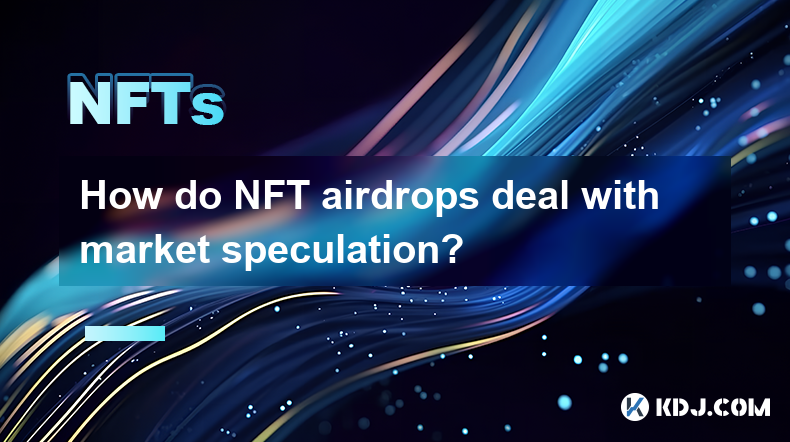
How do NFT airdrops deal with market speculation?
Apr 20,2025 at 10:28pm
NFT airdrops have become a significant phenomenon in the cryptocurrency space, often used as a marketing tool to distribute tokens or digital assets to a wide audience. However, they also introduce elements of market speculation that can impact the value and perception of NFTs. This article explores how NFT airdrops deal with market speculation, delving...
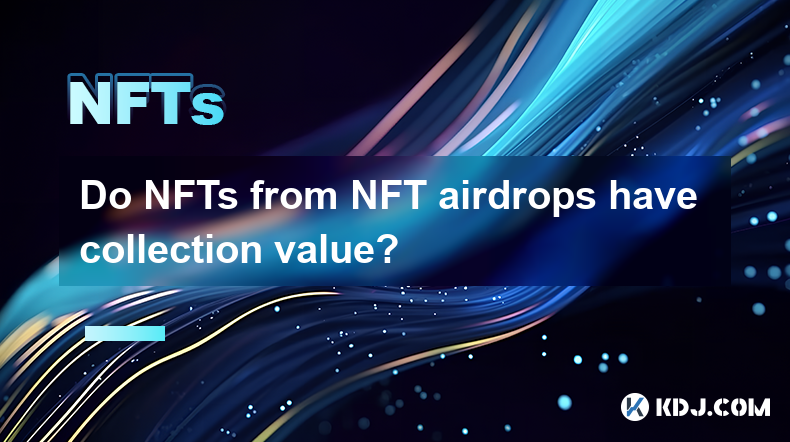
Do NFTs from NFT airdrops have collection value?
Apr 18,2025 at 11:49pm
NFTs, or non-fungible tokens, have become a significant part of the cryptocurrency ecosystem, and NFT airdrops are one way for projects to distribute these digital assets to their community. A common question that arises is whether NFTs received from airdrops have any collection value. To answer this question, we need to delve into various aspects of NF...
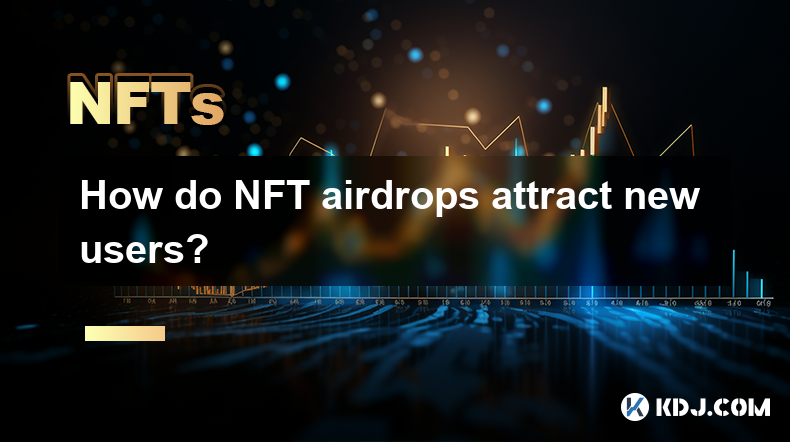
How do NFT airdrops attract new users?
Apr 21,2025 at 07:21am
NFT airdrops have become a popular strategy within the cryptocurrency community to attract new users and engage existing ones. By distributing free NFTs to a targeted audience, projects can create buzz, increase visibility, and foster a sense of community. This method leverages the allure of free digital assets to draw in participants who might not have...
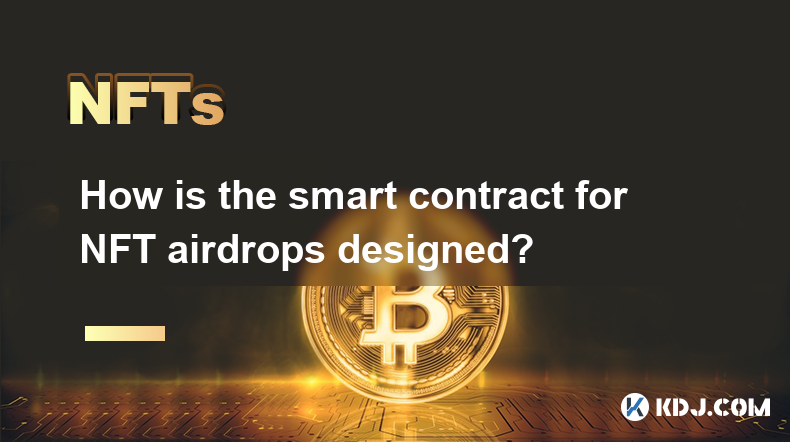
How is the smart contract for NFT airdrops designed?
Apr 18,2025 at 03:10am
The design of a smart contract for NFT airdrops is a complex process that requires careful consideration of various factors to ensure the airdrop is executed smoothly and securely. This article will delve into the intricacies of how such a smart contract is designed, focusing on key components, security measures, and the implementation process. Key Comp...
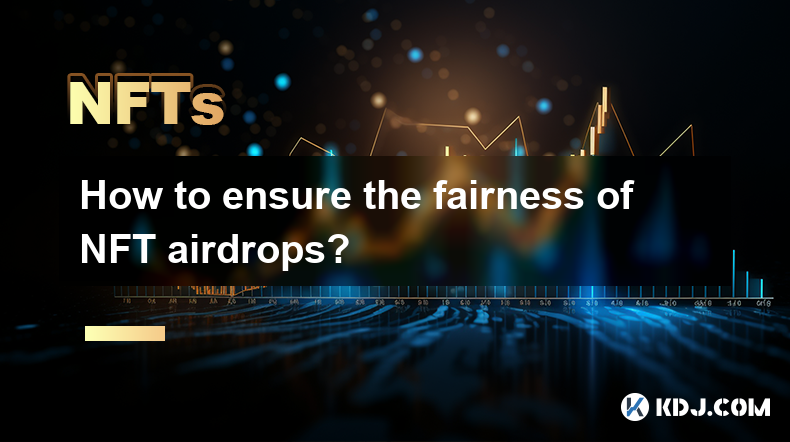
How to ensure the fairness of NFT airdrops?
Apr 24,2025 at 08:49am
Ensuring the fairness of NFT airdrops is crucial for maintaining trust and integrity within the cryptocurrency community. NFT airdrops, where non-fungible tokens are distributed freely to users, can be a powerful marketing tool, but they must be executed fairly to avoid accusations of favoritism or manipulation. This article explores various strategies ...

How to display and trade NFTs from NFT airdrops?
Apr 18,2025 at 04:42am
How to Display and Trade NFTs from NFT Airdrops? NFT airdrops have become a popular way for projects to distribute their tokens and engage with their community. If you've received NFTs through an airdrop, you might be wondering how to display and trade them. This article will guide you through the process step-by-step, ensuring you can showcase your NFT...

How do NFT airdrops deal with market speculation?
Apr 20,2025 at 10:28pm
NFT airdrops have become a significant phenomenon in the cryptocurrency space, often used as a marketing tool to distribute tokens or digital assets to a wide audience. However, they also introduce elements of market speculation that can impact the value and perception of NFTs. This article explores how NFT airdrops deal with market speculation, delving...

Do NFTs from NFT airdrops have collection value?
Apr 18,2025 at 11:49pm
NFTs, or non-fungible tokens, have become a significant part of the cryptocurrency ecosystem, and NFT airdrops are one way for projects to distribute these digital assets to their community. A common question that arises is whether NFTs received from airdrops have any collection value. To answer this question, we need to delve into various aspects of NF...

How do NFT airdrops attract new users?
Apr 21,2025 at 07:21am
NFT airdrops have become a popular strategy within the cryptocurrency community to attract new users and engage existing ones. By distributing free NFTs to a targeted audience, projects can create buzz, increase visibility, and foster a sense of community. This method leverages the allure of free digital assets to draw in participants who might not have...

How is the smart contract for NFT airdrops designed?
Apr 18,2025 at 03:10am
The design of a smart contract for NFT airdrops is a complex process that requires careful consideration of various factors to ensure the airdrop is executed smoothly and securely. This article will delve into the intricacies of how such a smart contract is designed, focusing on key components, security measures, and the implementation process. Key Comp...

How to ensure the fairness of NFT airdrops?
Apr 24,2025 at 08:49am
Ensuring the fairness of NFT airdrops is crucial for maintaining trust and integrity within the cryptocurrency community. NFT airdrops, where non-fungible tokens are distributed freely to users, can be a powerful marketing tool, but they must be executed fairly to avoid accusations of favoritism or manipulation. This article explores various strategies ...
See all articles























































































